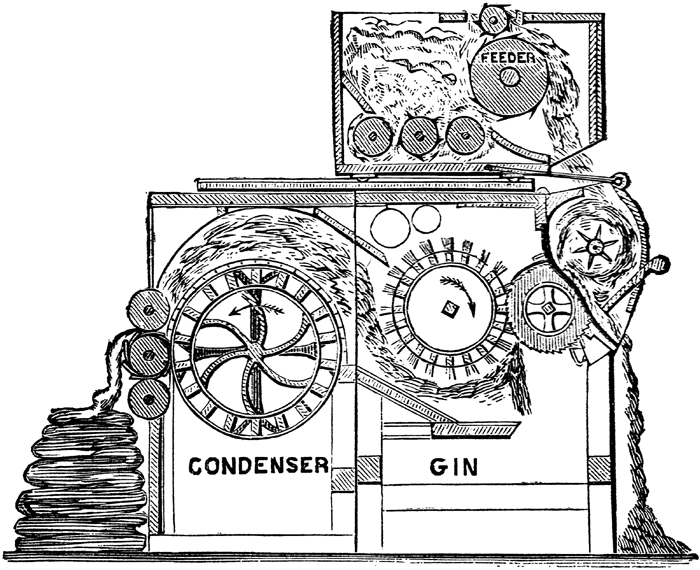The most important overland route for American migration to the far...
The term Reconstruction refers to the
The most likely way for most slaves to express discontent was
The most important overland route for American migration to the far...
The invention in the 1790s that permitted the great expansion of...
The most important overland route for American migration to the far...
Most African Americans experienced slavery
John Tyler initiated the politics of Manifest Destiny
In the South, social prestige and influence were determined by
Good physical conditions for slaves were necessary to
Which one of the following states actually existed for ten years as an...
Most African Americans experienced slavery
Slaveholders continually indocrinated their slaves with the idea of
The most likely way for most slaves to express discontent was
Good physical conditions for slaves were necessary to
Historians have evaluated abolitionism as
The Webster- Ashburton Treaty of 1842 settled a boundary dispute...
Northerners who moved South during Reconstruction were called
Most African Americans experienced slavery
Good physical conditions for slaves were necessary to
Southern proslavery arguments did NOT include the belief that slavery...
The most likely way for most slaves to express discontent was
Historians have evaluated abolitionism as
Which one of the following states actually existed for ten years as an...
Slavery would not have lasted as long as it did except for
The American population moved westward in the 1830s and 1840s for all...
The most plausible reason for the Texas Revolution was
Which one of the following states actually existed for ten years as an...
According to the principle of popular sovereignty
The man who became president of the United States after Lincoln's...
The foundation of the African American culture was
The foundation of the African American culture was
In the large cities of the North, abolitionism
Historians have evaluated abolitionism as
The most plausible reason for the Texas Revolution was
The most plausible reason for the Texas Revolution was
James Polk went to war with Mexico
In the 1850s, the most important example of literary abolitionism was
Each of the following is a valid statement regarding the instrument...
The Webster- Ashburton Treaty of 1842 settled a boundary dispute...
Which one of the following constitutional amendments abolished...
Which one of the following constitutional amendments abolished...
In the South, social prestige and influence were determined by
Slaveholders continually indocrinated their slaves with the idea of
The foundation of the African American culture was
Southern proslavery arguments did NOT include the belief that slavery...
Manifest Destiny was based, in part, on
Northerners who moved South during Reconstruction were called
Slaveholders continually indocrinated their slaves with the idea of
In the large cities of the North, abolitionism
The American population moved westward in the 1830s and 1840s for all...
Which of the following was NOT Mexican territory in 1825?
Which of the following was NOT Mexican territory in 1825?
John Tyler initiated the politics of Manifest Destiny
For the South, recovery from devastation of the Civil War
As early as 1863, Lincoln proposed a plan for restoring southern state...
Which of the following was NOT Mexican territory in 1825?
Which of the following constitutional amendments attempted to give...
As early as 1863, Lincoln proposed a plan for restoring southern state...
Slavery would not have lasted as long as it did except for
Southern proslavery arguments did NOT include the belief that slavery...
The Webster- Ashburton Treaty of 1842 settled a boundary dispute...
John Tyler initiated the politics of Manifest Destiny
The Dred Scott decision
A minimal Reconstruction policy was favored by
The federal agency designed to assist former slaves in making the...
About _________ percent of whites in the South in 1860 were large...
Each of the following is a valid statement regarding the instrument...
Which of the following is true of cotton agriculture in the pre-Civil...
Which one of the following was an important premise of Manifest...
The Free Soil movement supported the exclusion of slavery from the...
Andrew Johnson was indicted by the House for his violation of the
The winner of the election of 1844 was
Underlying the rapid growth of the Republican Party was its
Black Codes showed that
Andrew Johnson was indicted by the House for his violation of the
The most outrageous component of the Compromise of 1850 was the
In the large cities of the North, abolitionism
Which of the following is true of cotton agriculture in the pre-Civil...
The American population moved westward in the 1830s and 1840s for all...
Opposition to Tyler's plan for the annexation of Texas came,...
In 1856, Congressman Preston Brooks of South Carolina, on the floor of...
About _________ percent of whites in the South in 1860 were large...
Which of the following required 50 percent of southern voters to take...
Each of the following is a valid statement regarding the instrument...
Which of the following is true of cotton agriculture in the pre-Civil...
















